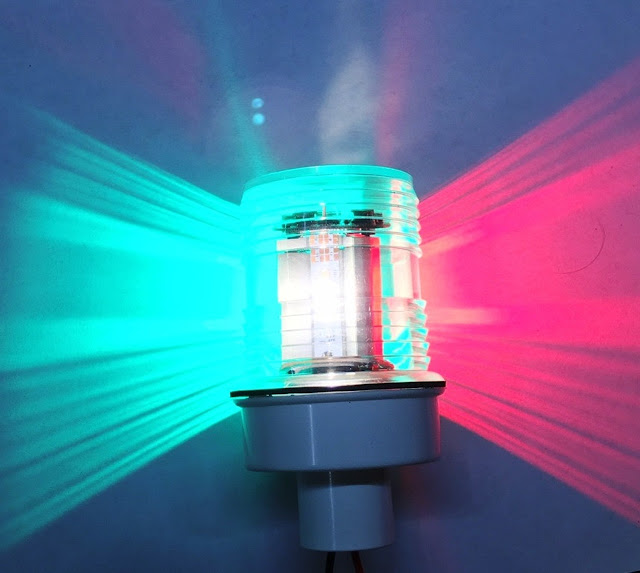The importance of upwind mainsail trim
When sailing upwind, many crews focus primarily on good headsail trim. Headsail trim is important because it steers the boat to windward, the luff telltails leading the way. But sadly, too many sailors underestimate the value of the mainsail when it come to upwind sailing, in particular on fractional non-overlapping rigs.
Look at the picture at right, which shows such a rig going to windward in perfect trim. The target breeze would be 7-13 knots. The colors represent pressure differential (lift), with green then orange being the greatest. You would expect the jib to look like that, but look at all the drive that comes from the mainsail, and the top of the main in particular.
That lift means boat speed, and more efficient foils underwater. On BlueJ, the helm can immediately feel when the main goes in and out of trim. Boat speed drops, and so does the windward angle, and the helm comes out of balance.
Key to obtaining this level of trim is the ability to get the boom to the center-line of the boat. This allows the correct amount of twist in the sail without over pressuring it, which would hook the leech and destroy the shape. Ideally, the top batten would be parallel with the boom, and the top telltail would be flying 50% of the time, and 50% flicking backwards.
Why is this so key on boats like the 260? Part of the answer is in the very high aspect jib. At almost 3:1, the jib gets very narrow at the top, and there is very little chord length to create drive, even though what is generated is very high. It is also why it is so important to have a IMS-MAX cut mainsail, so you maximizes your girth (area) up high.
In windward leeward racing, it is vitally important that you are able to hold your lane against like or similar rated boats. If you cannot, you either sail in the fleets dirty air to leeward of them, or have to tack out and sail on the wrong board in relation to the fleet.
In stock configuration, the First 260 had a factory optional traveler. I always found this very odd. Maybe Beneteau figured the boat would be mostly pleasure sailed or distance raced, where pure windward work was at less of a premium. In any case, it's my belief that you cannot sail the boat to it maximum capabilities without a traveler. See how I added one to BlueJ HERE.
Image via North Sails.
Look at the picture at right, which shows such a rig going to windward in perfect trim. The target breeze would be 7-13 knots. The colors represent pressure differential (lift), with green then orange being the greatest. You would expect the jib to look like that, but look at all the drive that comes from the mainsail, and the top of the main in particular.
That lift means boat speed, and more efficient foils underwater. On BlueJ, the helm can immediately feel when the main goes in and out of trim. Boat speed drops, and so does the windward angle, and the helm comes out of balance.
Key to obtaining this level of trim is the ability to get the boom to the center-line of the boat. This allows the correct amount of twist in the sail without over pressuring it, which would hook the leech and destroy the shape. Ideally, the top batten would be parallel with the boom, and the top telltail would be flying 50% of the time, and 50% flicking backwards.
Why is this so key on boats like the 260? Part of the answer is in the very high aspect jib. At almost 3:1, the jib gets very narrow at the top, and there is very little chord length to create drive, even though what is generated is very high. It is also why it is so important to have a IMS-MAX cut mainsail, so you maximizes your girth (area) up high.
In windward leeward racing, it is vitally important that you are able to hold your lane against like or similar rated boats. If you cannot, you either sail in the fleets dirty air to leeward of them, or have to tack out and sail on the wrong board in relation to the fleet.
In stock configuration, the First 260 had a factory optional traveler. I always found this very odd. Maybe Beneteau figured the boat would be mostly pleasure sailed or distance raced, where pure windward work was at less of a premium. In any case, it's my belief that you cannot sail the boat to it maximum capabilities without a traveler. See how I added one to BlueJ HERE.
Image via North Sails.




Comments
Post a Comment